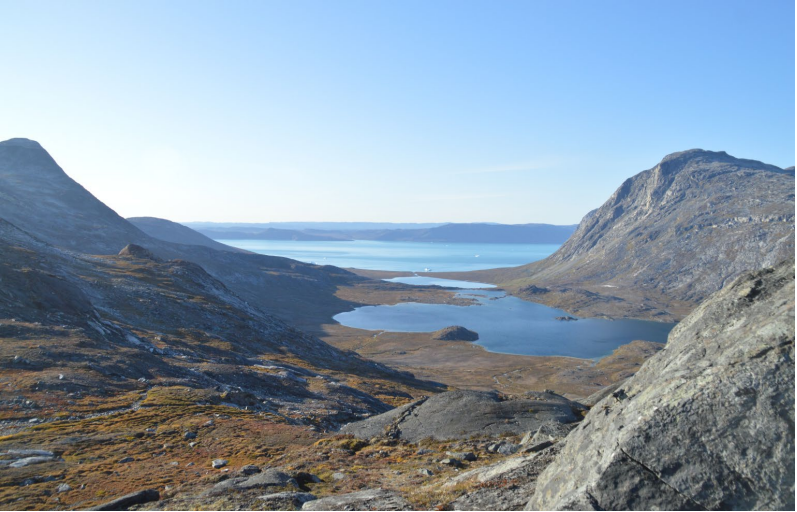Universitetsavisen
Nørregade 10
1165 København K
Tlf: 21 17 95 65 (man-fre kl. 9-15)
E-mail: uni-avis@adm.ku.dk
Ph.d.-forsvar
Ph.d.-forsvar — Lingyu Zhang 1 MARCH
Date & Time:
Place:
Aud A, Department of Geosciences and Natural Resource Management, Øster Voldgade 10, 1350 Kbh K
Hosted by:
Geography Section - IGN
Cost:
Free
Lingyu Zhang defends his thesis,
“Linking the Archean metavolcanic and ultramafic rock record of SW Greenland with implications for early Earth geodynamics”
Supervisor:
Associate Professor Kristoffer Szilas, IGN
Assessment Committee:
Professor Emeritus Hugh Rollinson, University of Derby, UK
Senior Researcher Nynke Keulen, GEUS
Professor Tod Waight (chair), IGN
Abstract:
The rich Archean geological records in southern West Greenland offer valuable insights into the tectonic evolution of the early Earth. Specifically, the well-preserved metavolcanic and ultramafic rock assemblages in the Nuuk region potentially represent co-genetic lithologies, thereby aiding in clarifying their petrogenetic context as well as intricate geological relationships.
This thesis extensively examines three suites of metavolcanic and ultramafic rock assemblages from this region: the Narssaq Ultramafic Body (NUB), Bjørneøen Supracrustal Belt (BSB), and Storø Supracrustal Belt (SSB). They represent rock records from the Eoarchean, Mesoarchean, and Neoarchean, respectively, providing an opportunity to comprehend the complete geological history of the Archean Eon (4.0-2.5 Ga) in SW Greenland.
The >3.81 Ga NUB is a small outcrop of ultramafic rocks distributed in the Itsaq Gneiss Complex (IGC). It mainly consists of peridotite and is spatially associated with some tholeiitic amphibolites. The NUB ultramafic rocks were previously interpreted as the oldest preserved mantle peridotites, formed in an Eoarchean subduction setting. However, the geochemical data presented in this thesis suggest that these ultramafic rocks are consistent with a cumulate origin. As demonstrated by thermodynamic modeling, they formed through the fractional crystallization of the NUB amphibolites. Therefore, the NUB ultramafic rocks cannot provide support for the operation of plate tectonics in the early Earth. The BSB contains a series of tholeiitic amphibolites, calcalkaline andesitic leucoamphibolites, and ultramafic rocks. Zircon dating of the leucoamphibolite yielded an age of 3077 ± 6 Ma, aligning with the previously identified volcanic arc activity at 3070 Ma. In addition, several models based on thermodynamics and partition coefficients indicate that the BSB ultramafic rocks reflect open system cumulate processes at shallow depths, while the andesitic leucoamphibolites are compatible with binary magma mixing processes. Such mixing and homogenization may have occurred in a subduction-accretion tectonic setting, similar to those found in other Mesoarchean supracrustal belts in SW Greenland. The Neoarchean SSB is tectonically sandwiched between the Eoarchean Færingehavn Terrane and the Mesoarchean Akia Terrane. Within this belt, tourmaline occurs as orbicules in ultramafic rocks, an occurrence not previously reported within the North Atlantic Craton. Detailed studies of these tourmalines indicate that the orbicules formation reflects metasomatic reactions between the SSB ultramafic rocks and their adjacent metapelitic units. Originally formed by a fractional crystallization process, 2 these ultramafic rocks underwent silicification during metasomatism, contributing to the complex and variable geochemical characteristics of such rocks.
Overall, the three case studies in this thesis provide constraints on the geodynamic setting of SW Greenland during the Archean Eon, best explained by the operation of plate tectonics since the Mesoarchean. Furthermore, there is no evidence that the Archean ultramafic rocks are mantle residues. Instead, they are generally related to their spatially associated amphibolites and represent products of the fractional crystallization of tholeiitic magmas.
A digital version of the PhD thesis can be obtained from the PhD secretary at phd@ign.ku.dk
